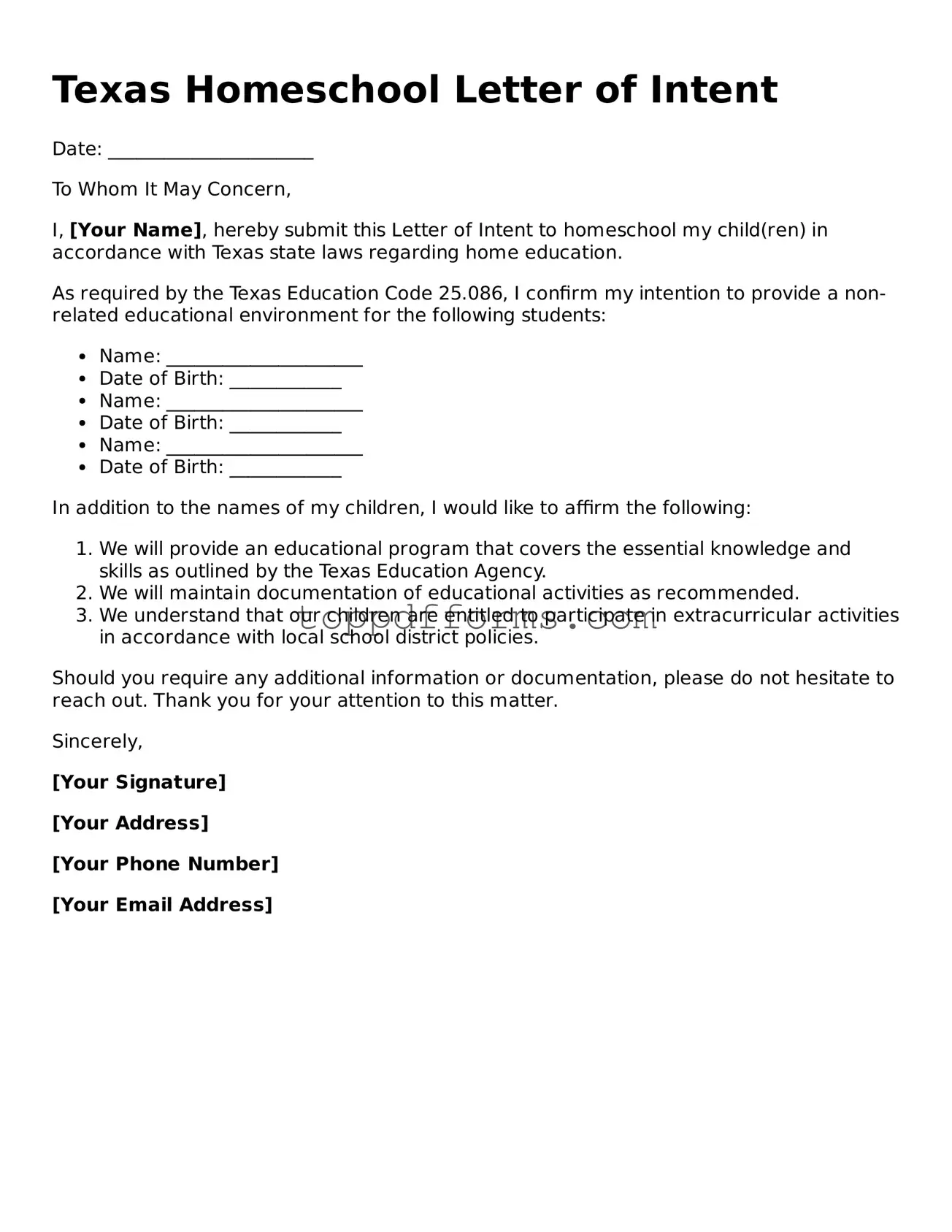What is the Texas Homeschool Letter of Intent?
The Texas Homeschool Letter of Intent is a formal document that parents or guardians must submit to notify the local school district of their intention to homeschool their child. This letter serves as a declaration of the family's choice to provide education outside the traditional school system.
Who needs to file a Letter of Intent?
Any parent or guardian who wishes to homeschool a child in Texas must file a Letter of Intent. This includes families with children who are currently enrolled in public or private schools, as well as those who have never attended school.
When should the Letter of Intent be submitted?
The Letter of Intent should be submitted at the beginning of the homeschooling process. It is advisable to file the letter before the school year begins or as soon as you decide to withdraw your child from a traditional school setting.
What information is required in the Letter of Intent?
The Letter of Intent typically requires basic information such as the child's name, date of birth, and the address of the homeschooling family. Additionally, some families may choose to include information about their educational philosophy or curriculum plans, although this is not mandatory.
Is there a specific format for the Letter of Intent?
There is no official form mandated by the state for the Letter of Intent. However, it should be a written document that clearly states your intention to homeschool. Many families choose to use a simple letter format to convey this information.
Do I need to notify the school district every year?
Once you file a Letter of Intent, you do not need to submit a new letter each year unless you change your educational approach or your child’s status. However, it is good practice to keep the school district informed of any significant changes regarding your homeschooling situation.
What happens if I do not file a Letter of Intent?
Failing to file a Letter of Intent may lead to misunderstandings with the local school district. In some cases, it could result in the district considering the child truant. It is essential to formally notify the district to avoid potential legal complications.
Where should I send the Letter of Intent?
The Letter of Intent should be sent to the local school district office where your child resides. It is advisable to keep a copy of the letter for your records and consider sending it via certified mail to ensure it is received.
